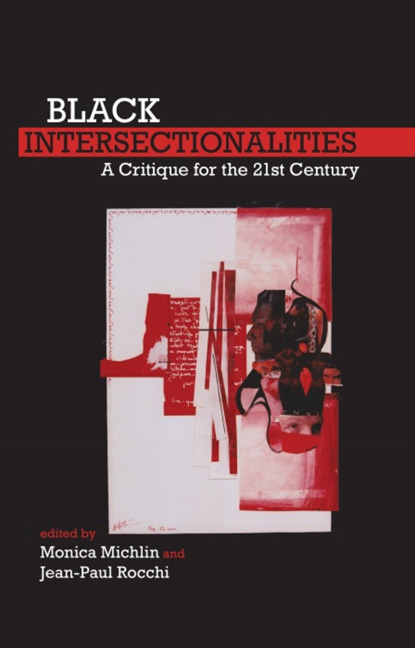Book contents
- Frontmatter
- Contents
- 1 Introduction: Theorizing for Change: Intersections, Transdisciplinarity, and Black Lived Experience
- 2 Exordium: Writing and the Relation: From Textual Coloniality to South African Black Consciousness
- I Challenging Hegemonic Gender Identities
- II Nonconformity and Narrative heorizing
- 6 Benjamin Franklin's Ethnic Drag – Notes on Abolition, Satire, and Affect
- 7 “Weh eye nuh see heart nuh leap”: Claude McKay's Literary Drag Performance in Banana Bottom
- 8 The Souls of Black Gay Folk: The Black Arts Movement and Melvin Dixon's Revision of Du Boisian Double Consciousness in Vanishing Rooms
- III Upsurges of Desire
- IV Epistemological Genealogies and Prospections
- Contributors
- Index
7 - “Weh eye nuh see heart nuh leap”: Claude McKay's Literary Drag Performance in Banana Bottom
from II - Nonconformity and Narrative heorizing
- Frontmatter
- Contents
- 1 Introduction: Theorizing for Change: Intersections, Transdisciplinarity, and Black Lived Experience
- 2 Exordium: Writing and the Relation: From Textual Coloniality to South African Black Consciousness
- I Challenging Hegemonic Gender Identities
- II Nonconformity and Narrative heorizing
- 6 Benjamin Franklin's Ethnic Drag – Notes on Abolition, Satire, and Affect
- 7 “Weh eye nuh see heart nuh leap”: Claude McKay's Literary Drag Performance in Banana Bottom
- 8 The Souls of Black Gay Folk: The Black Arts Movement and Melvin Dixon's Revision of Du Boisian Double Consciousness in Vanishing Rooms
- III Upsurges of Desire
- IV Epistemological Genealogies and Prospections
- Contributors
- Index
Summary
Caribbean and Harlem Renaissance writer Claude McKay locates his third novel, Banana Bottom (1933), in his native home, Jamaica. Set between the country town of Jubilee and the rural village of the same name, Banana Bottom examines turn of the century Jamaican cultural and social value systems through its female protagonist Bita Plant and can be read as an autobiographical novel in which the protagonist Bita Plant is really McKay in drag. Where in life McKay could not return in actuality, he takes a literary journey through the body of his protagonist to repair his relationship with his father and to resolve his guilt over responsibility in his mother's death. The biographical evidence of McKay's life mirrors his characterization of Bita Plant as a maroon figure returning to “the point of entanglement” (Glissant, 1989: 26). In this reading Bita can, for a number of reasons, be considered to be McKay's maroon self returning to the land of his birth: one, because of McKay's habit of literary self-portrait, primarily through impersonation/ ventriloquism; second, because, as critics have shown, McKay tends to map his double consciousness onto his male protagonists in his earlier texts; third, because McKay mirrors himself through maroon personas – vagabond troubadour and nancy persona, both figures of ambiguity – postures that we see Bita Plant inhabiting. This, however, is the first time that McKay maps his psychological split onto a female protagonist.
As both a social and symbolic act, cross-dressing (transvestism) allows an individual to express (an)other side of his or her persona and to expose the fiction, frailty, and unreliability of gender. Performing drag then becomes a disruption, to echo Judith Butler (1990), and highlights the “risk” of/ in heterosexuality being “de-instituted at every interval” (Butler, 1990: 24). Butler's notion of drag as a disruptive performance emphasizes the complexity inherent in how drag deconstructs and constructs – in terms of same time, same sex desire, transgressive sexualities, gender identity, gender inversion, and gender bending.
- Type
- Chapter
- Information
- Black IntersectionalitiesA Critique for the 21st Century, pp. 98 - 113Publisher: Liverpool University PressPrint publication year: 2013



